I am really pleased to be able to bring you an update on the status of “Pratt Reef” the 210-gallon reef system located on the campus of Pratt Institute in Brooklyn, NY. The project’s conception and development was the subject of an article I wrote for the 2001 Marine Fish and Reef USA Annual. At its core, the idea was to build a thriving, beautiful captive reef in as environmentally friendly way as possible. To this end, I can claim with confidence that the rock work is almost entirely of aquacultured origins, the corals are over 90% tank raised, and the fish population is carefully chosen to include as many aquacultured and responsibly harvested species as possible. As the accompanying photographs will show, the system has gone through several changes over the past three years, but I hope you will agree that the integrity and promise of the original ideal has been maintained and realized.
Editors Note: There are additional photos of this month’s Feature Aquarium in its Photo Album.
I’d also like to take the opportunity to thank Abbey Braden for the use of some of her beautiful photographs, and to acknowledge the considerable time commitments of my College Work Study students, Samantha Lopez, Tristan Wilson and Dan James, without whose help, “Pratt Reef” would not be what it is today.
Tank
A custom made 210 gallon acrylic aquarium and stand ( 84″x 24″x 24″) with built in over flow from Aqua Clear Aquatics. A 40-gallon acrylic sump from ETS is plumbed directly below the main display.
Filtration
Skimming is provided by an ETSS Evolution 750 downdraft skimmer driven by an Iwaki 40 RLT water pump. Together they provide for very productive waste removal and easy maintenance. Carbon is run continuously in a Magnum HOT canister and is changed roughly once a month.
Circulation
The main system pump is a Gen X Mak 4. It circulates at a rate of 1190 gallons per hour and returns water to the main display via two flexible modular hoses in the center overflow. Two tunze Turbelle Stream 6060 pumps located at opposite ends of the aquarium provides additional current.
Water Purification
All water used in this system passes through a Spectrapure Spectra+ 2000 75GPD RO/DI unit.
Lighting
The system is lit by 3 Iwasaki 250 watt 6500K metal halide bulbs in combination with 2 160-watt Actinic VHO florescent bulbs from URI, all mounted in a PFO reflector. Icecap electronic ballasts power all bulbs. Two Icecap variable speed fans cool the hood.
Additives
Alkalinity and Calcium are maintained via daily additions of ESV B-Ionic in combination with a rather sporadic dosing with Kalkwasser. Even more sporadic additions of iodine and strontium are used.
Sand Substrate
There is a roughly 4″ layer of ESV fine aragonite sand covering the bottom of the aquarium. This bed was initially seeded with 10 pounds of live sand from the Florida gulf coast.
Liverock
The rockwork in the system is comprised of 100 lbs. of aquacultured rock from Florida that was supplemented by approximately 30 lbs. of Indo Pacific rock.
Maintenance
The skimmer is cleaned weekly. Approximately 45 gallons of water exchanged monthly using Instant Ocean salt mix. All other tasks are done as needed.
Feeding
The system is fed twice daily with a combination of frozen and dried foods. Frozen feed includes Mysis shrimp. Brine shrimp enriched with Selcon, Pacifica Plankton and Cyclopeeze. Dried food includes both Pellet and Flake foods from Ocean Nutrition, Omega Sea and OSI. Herbivores are given additional supplements of Dried seaweed several times a week.
Water Chemistry
- Temperature: 76-82 degrees depending on the season, controlled by two Ebo Jager heaters, fans and room air conditioner as needed.
- Salinity: 1.025 specific gravity.
- Calcium: 400- 450 ppm.
- Alkalinity: 2.5-3.0 mEq/l.
- Phosphate: < 0.1 ppm.
- Nitrate: < 2.5 ppm.
- pH: 8.3 to 8.5 measured by a pinpoint monitor.
Inhabitants
Fish
The system contains 4 larval reared Hippo Tangs ( Paracathurus hepatus ), 4 Lyretail Anthias ( Pseudanthias squamipinnis ), a mated pair of Red Sea Lyretail Angels ( Genicanthus caudovittatus ), 1 Yellow Tang ( Zebrasoma flavescens ), 1 Naso Tang ( Naso literatus ), a pair of Ocellaris clownfish ( Amphiprion ocellaris ), 1 Iridis Wrasse ( Halichoeres iridis ), a pair of Orchid Dottybacks ( Pseudochromis friedmani ), a pair of Arabian Dottybacks ( Pseudochromis aldabraensis ), a trio of Sankey’s Dottybacks ( Pseudochromis sankeyi ), and a school of 6 Green Chromis ( Chromis virdis ).
Corals
Coral colonies are numerous and varied with over 90% originating from aquacultured or home propagated sources.
Acropora species include Acropora pulchra, A.formosa, A. millepora (pink), A. millepora (green), A. millepora (green and pink), A. humilis (purple), and A. Yongei (green Bali Staghorn).
Montipora species include Montipora capricornis (red), M. spumosa, M. digitata (red), and M. digitata (green).
Also present are Euphyllia parancora, E. divisa, and E. glabrescens, Cynarina lacrymalis, Echinophyllia sp., Caulastrea, 2 Fungia, Blastomussa wellsi, B. merleti, Favia, Hydnophora exesa, Leptoseris scabra, Heliopora coerulea, and Psammacora contigua.
There are also numerous Mushroom Anemones and Zooanthid colonies, as well as a Tridacna squamosa clam, several Serpent Stars, sand sifting Cucumbers, Snails and Hermit Crabs.



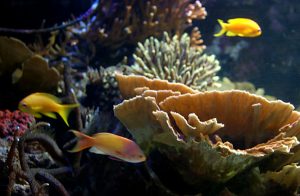
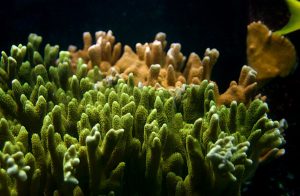



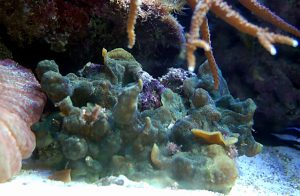
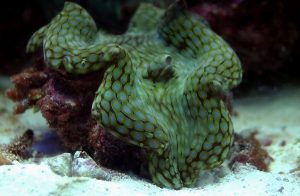

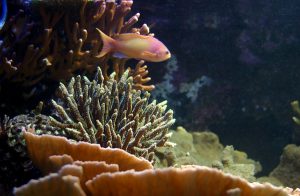

0 Comments